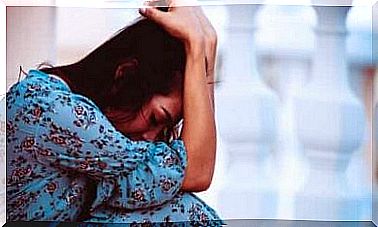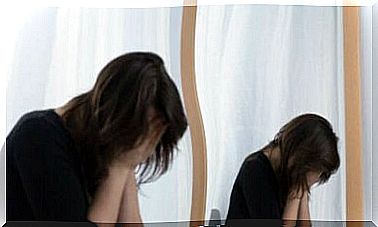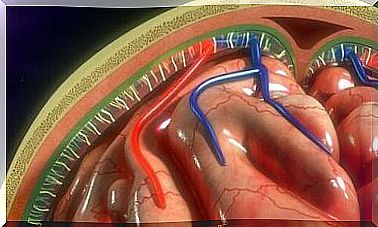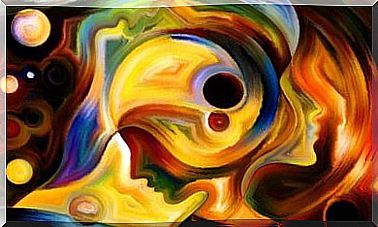Alopecia In Women – The Psychological Consequences
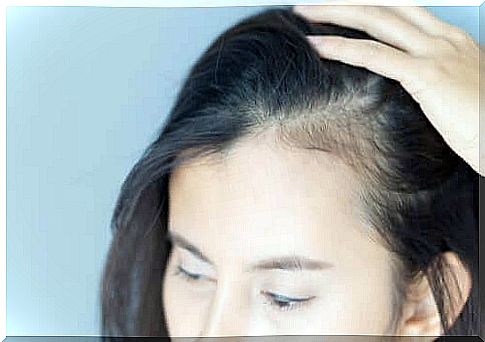
Although hair loss in men is quite common, and generally socially acceptable, it can be difficult for women living with hair loss. If you consider the standards of beauty for women, it is easy to understand some of the psychological consequences of alopecia in women.
Alopecia is a term for temporary or permanent hair loss. It can be categorized as either moderate or severe. Hair loss is considered abnormal if you lose more than 100 hairs a day. This aesthetic and psychological problem may also be the first sign of an underlying pathology.
Alopecia in women can affect the entire scalp or be limited to a specific area. Women with this problem tend to have great difficulty seeking help. They will often feel ashamed while feeling uncomfortable. In addition, they will often also have a lower self-esteem.
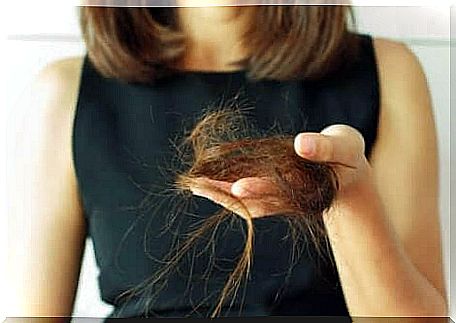
Different types of alopecia in women
There are several types of alopecia in women with varying degrees of severity. The etiology is heterogeneous, which means that the medical and aesthetic treatments vary, depending on the individual with the problem.
Androgenetic alopecia (female type of hair loss)
Androgenetic alopecia can affect up to a third of all women. It will most often occur during menopause, when a woman’s estrogen level drops. This type of alopecia will mainly affect the central part of the scalp, and will most often not affect the hairline / hairline.
In very advanced cases, however, it can affect the entire scalp. An early diagnosis can usually help stop hair loss from developing further. Furthermore, it can also increase the density of the capillaries (the hairs return to their normal width) and help stimulate new hair growth.
Cicatricial alopecia (scarring)
Cicatricial alopecia occurs when fibrous scar tissue replaces the hair follicles. The scar tissue prevents the hair from growing as normal. This condition can be congenital or something you develop later.
The primary causes of this condition are mechanical trauma (burns, surgeries, etc.), autoimmune diseases (lupus scleroderma, etc.), bacterial infections (folliculitis), fungal infections (ringworm), viruses (shingles) and tumors.
A trichology study and a histological test are both necessary to be able to make an accurate diagnosis.
Alopecia areata (patchy hair loss)
Alopecia areata causes round spots of hair loss on various parts of the body. The stains can occur anywhere. However, it is most common that they occur on the scalp. Unlike other forms of alopecia, the affected areas appear healthy and well. There are no signs of disease, such as dandruff, inflammation or redness.
Stress and tension can trigger alopecia areata, but it is not the origin of the disease. This problem is reversible, since the hair follicles are not damaged and are still there, under the skin.
A trichology study can provide an accurate diagnosis, although a biopsy or immunological study is sometimes necessary. This type of alopecia can in some cases lead to alopecia universalis.
Alopecia universalis
Alopecia affects about 2% of the population. This condition can also be related to many other conditions, such as diseases of the thyroid gland, type 1 diabetes, allergies and asthma. It has similar characteristics to other dermatological diseases such as eczema, psoriasis or vitiligo.
There is a certain genetic component to alopecia universalis. Other triggers can be stress, viral infections and side effects of medications. Usually, alopecia starts with just a small, round spot on the scalp without hair.
This condition is unpredictable. Hair loss can occur suddenly, grow back and then fall out again. It manifests itself because the immune system attacks the cells in the capillary sacs, which then shrink and stop producing visible hair. Nevertheless, the hair follicles will remain active. If they receive the right signal at the right time, they can start producing hair again. It can happen with or without treatment, in the short or long term.
While patients wait for their hair to grow back, most people try to find a treatment that works. People have tried stem cell treatments, growth factor therapy, hair transplants… the list is long. Unfortunately, none of these treatments can be called effective. There is still no cure for alopecia.
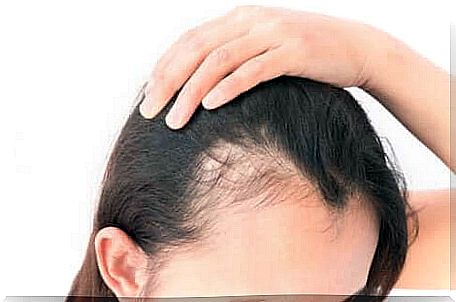
The psychological consequences of alopecia in women
For women with alopecia, the consequences are almost exclusively negative. Although it is now socially acceptable for men to be bald, the same is not true for women. Alopecia in women is very often followed by, among other things, isolation and depression.
Thick, healthy hair is valued as an attractive trait and one of the greatest symbols of femininity. Hair loss is related to menopause and infertility. Consequently, women suffering from alopecia will try to arrange their hair in a way that hides the areas where the hair becomes thinner or falls out. They will also often avoid places like swimming pool, beach and gym. It can even lead them to choose to isolate themselves socially.
While the origin of alopecia areata has an autoimmune etiology, studies have shown the importance of psychological factors in this type of alopecia. Many patients talk about an acute stressful situation when they share their history with the disease.
Stress, whether it is caused by unemployment, a traumatic breakup, or the death of someone close to you, can lead to immunological changes. This weakens the immune system and can cause T cells to attack the hair follicles.
In conclusion, if you consider the fact that hair loss according to many changes a person’s physical appearance negatively, it is easy to understand that alopecia in women leads to major psychological consequences. Furthermore, it also becomes easier to understand how few women are equipped with the right tools to cope with the emotional impact of losing hair, whether it is partial or total.

